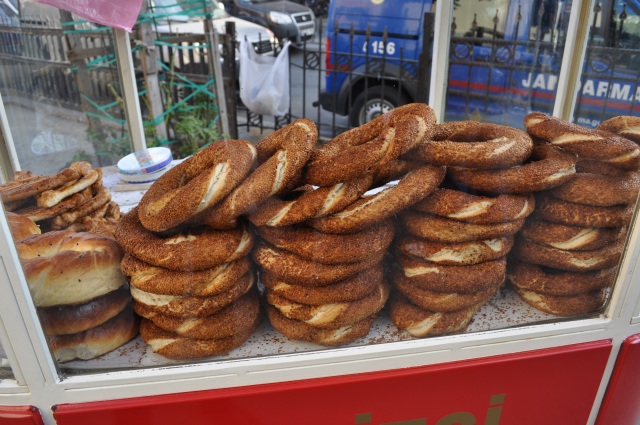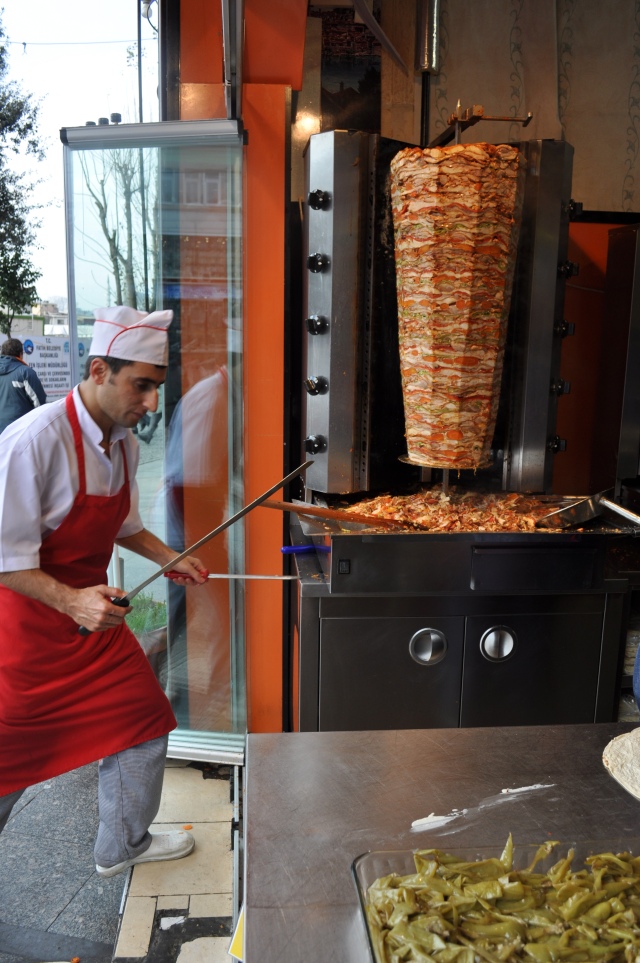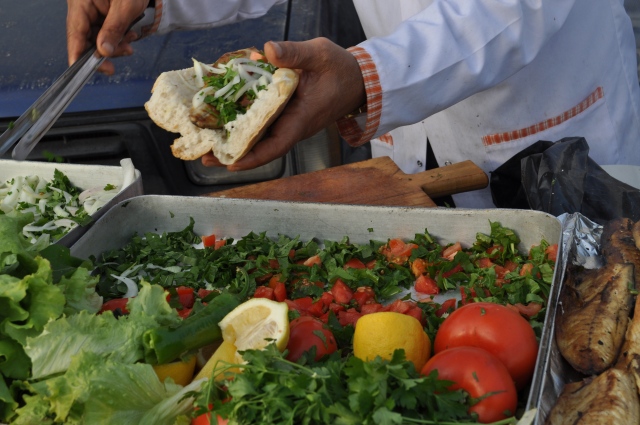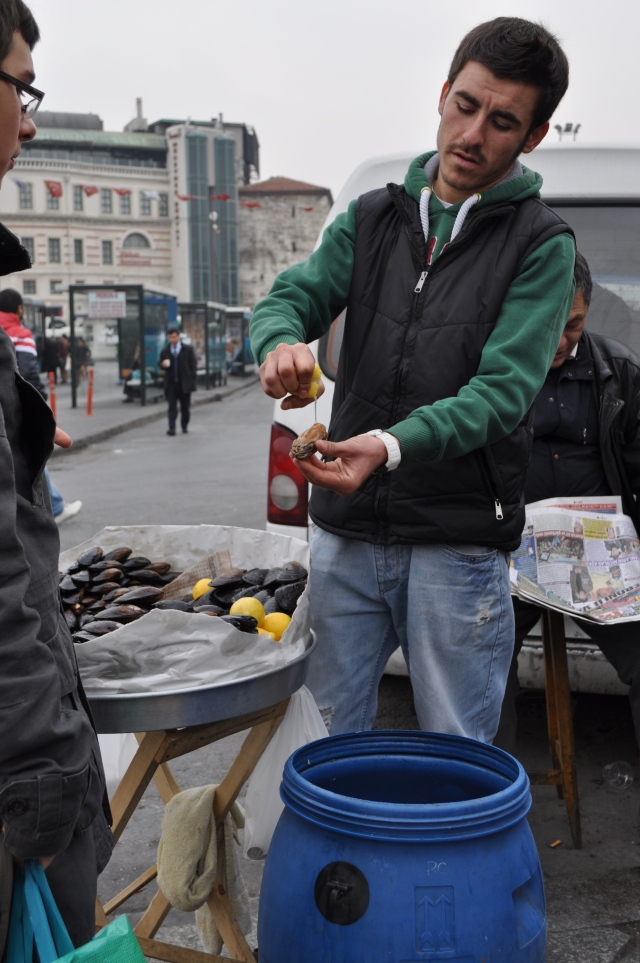 Last weekend, I trekked a full five blocks to Mandu, a Korean restaurant located in Dupont and now also on 5th and K, basically next door to my apartment. I first encountered Mandu at its Dupont location on July 17, 2010. It was the middle of my cultural exchange trip with South Korea and also the night before my birthday, hence the exact recall of the date.
Last weekend, I trekked a full five blocks to Mandu, a Korean restaurant located in Dupont and now also on 5th and K, basically next door to my apartment. I first encountered Mandu at its Dupont location on July 17, 2010. It was the middle of my cultural exchange trip with South Korea and also the night before my birthday, hence the exact recall of the date.
I remember ordering, or rather having my Korean counterpart, Na Young, order for me, the chap chae, Korean noodles with vegetables. As with all real Korean restaurants, we were presented with our side dishes, or banchan which change daily, but always include kimchi (pictured below). This meal marked my first taste of Korean cuisine, my first sip of soju, and my first trying efforts at chopstick (Chinese chicken fingers as a kid did not really require this skill early on, and chopsticks with sushi is easy to fake).
 When I moved back to DC, one of the first restaurants I returned to was Mandu. Needless to say, my life excitement level elevated to code amazing when I learned of Mandu’s newest location on K Street. It was a no brainer that my restaurant of choice to interview on this staycation therefore was Mandu. I sat down with owner Danny Lee, whose mother Yesoon is the chef, and asked him about traditional Korean food and the challenges and successes of bringing it to America.
When I moved back to DC, one of the first restaurants I returned to was Mandu. Needless to say, my life excitement level elevated to code amazing when I learned of Mandu’s newest location on K Street. It was a no brainer that my restaurant of choice to interview on this staycation therefore was Mandu. I sat down with owner Danny Lee, whose mother Yesoon is the chef, and asked him about traditional Korean food and the challenges and successes of bringing it to America.
Korean food, as Danny puts it, is literally Asian soul (“Seoul”) food. The flavors are comforting and traditional. Over its long history, Korean food remains the same and stays true to what it has always been. While many other Asian restaurants sell themselves on a “fusion” platform, an “American Style” Kobe Cheeseburger anyone?, Mandu and Korean restaurants in general can only succeed by maintaining the recipes that have been passed down from generation to generation. The menu therefore is straightforward and accessible to the first time Korean diner, or aged Korean foodie.
 Mandu’s success lies in the fact that it has not loss focus on the ingredients of its ancestors. As a result, the cuisine remains clean, healthy, and authentic. However, while the food may be akin to Korea circa 300 years ago, the restaurant’s atmosphere is anything but ancient. My roommate and I kept remarking on how the décor reminded us of Urban Outfitters. With wood-paneled walls, flying lime green birds, and modern tunes, the restaurant maintains a hip and trendy vibe which makes it into a destination rather than a place upon which to accidentally stumble.
Mandu’s success lies in the fact that it has not loss focus on the ingredients of its ancestors. As a result, the cuisine remains clean, healthy, and authentic. However, while the food may be akin to Korea circa 300 years ago, the restaurant’s atmosphere is anything but ancient. My roommate and I kept remarking on how the décor reminded us of Urban Outfitters. With wood-paneled walls, flying lime green birds, and modern tunes, the restaurant maintains a hip and trendy vibe which makes it into a destination rather than a place upon which to accidentally stumble.
 When I asked Danny about the food itself he offered many interesting insights. First, kimchi the staple of all Korean homes differs literally from kitchen to kitchen. In the Korean countryside, cabbage is fermented for a long period of time, making kimchi sour. In Seoul and in Mandu however the cabbage is not fermented for quite as long and lacks the extreme sour bite, which makes it more appeasing to Americans. Danny also spoke of the aesthestic quality of the food and how color and texture play huge roles in balance and presentation. Finally, while the restaurant remains true to traditional Korean recipes, it makes sure to have fun with the banchan sidedishes as a way to open up the palettes of first time Korean eaters.
When I asked Danny about the food itself he offered many interesting insights. First, kimchi the staple of all Korean homes differs literally from kitchen to kitchen. In the Korean countryside, cabbage is fermented for a long period of time, making kimchi sour. In Seoul and in Mandu however the cabbage is not fermented for quite as long and lacks the extreme sour bite, which makes it more appeasing to Americans. Danny also spoke of the aesthestic quality of the food and how color and texture play huge roles in balance and presentation. Finally, while the restaurant remains true to traditional Korean recipes, it makes sure to have fun with the banchan sidedishes as a way to open up the palettes of first time Korean eaters.
My final question, as always, was what should I make?! Danny suggested the two most popular dishes of bulgolgi and not surprisingly, mandu. Speaking of mandu, that is exactly how my visit ended, with a plate filled of yummy pork, shrimp, and vegetable dumplings. Yes please!
































